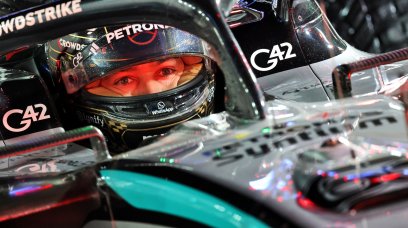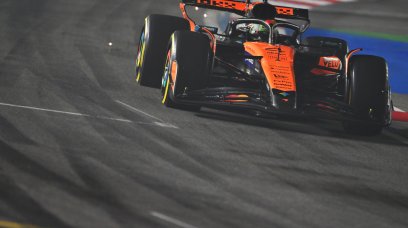In 2024, Formula 1 cars will converge towards the aerodynamics that have proven successful in the first two seasons with the ground effect cars.
The stability of the regulations leads the teams to follow without hesitation the path traced by Red Bull with the RB18 first and then with the RB19.
The sum of the two factors, i.e. convergence at the level of concepts and regulatory stability, should constitute the ideal condition for a performance convergence between all 10 teams.
However, it is equally true that precisely in a situation of extreme stability even in the surrounding conditions, represented by the absence of changes also with regards to the tyres, the performance increases may be less large than those seen in 2023, and progressively more reduced as you get closer to the front rows of the grid.
In practice, optimizing a car from the bottom or the centre of the grid requires considerable effort, but the gains in terms of performance are proportionally larger for the same amount of technical effort made than is the case for the cars of the top teams.
Therefore, in the case of Mercedes, Ferrari and McLaren, once the performances obtained in 2023 have been archived and the errors underlying those projects have been identified and subsequently corrected even if not in their entirety, the leap in performance, for example of the MCL60, is by no means guaranteed to be equivalent in 2024.
The three teams, in their role as pursuers of Red Bull, have progressively identified (each following an independent analysis process) the most efficient direction to increase the performance of their respective cars.
It could, however, be said net of the results obtained in 2023, that last season was largely used as a test bed to attest to the validity of the design path to follow for the 2024 car.
Viewed by others:
The problems of McLaren, Mercedes and Ferrari
If Ferrari and Mercedes, albeit in different ways, started from architectures that were ill-suited to an integration of the concepts of the RB19.
Paradoxically for the MCL60, the starting point could be considered more in line with the concept of the Red Bull.
Nevertheless, the development work was equally long and not entirely linear for all three teams, including McLaren.
But with the difference in the MCL60's consistent performance in the second part of the season, from Silverstone onwards, was rooted in the fact that it was originally closer to the RB19 than W14 or SF-23.
This is a fact that should not be underestimated, as although the leap in performance of the MCL60 compared to that of the beginning of the season was evident, in relative terms it allowed the Woking team to only come close to the yardstick of the season - without ever truly threatening it - only doing so in the Qatar Sprint with Oscar Piastri's win.
This does not mean that McLaren, Mercedes and Ferrari must resign themselves from now on to an unconditional surrender to Red Bull, even in 2024, but that the approach to the top becomes progressively harder, in terms of effort/benefit ratio.
Whoever is at the top, not underestimating the progress of their rivals and enjoying an advantage in terms of clarity of the basic concept and direction of development undertaken in the last two seasons, can develop the 2024 car enough to resolve the residual problems of the '23 car.
In short, it is extremely plausible that Ferrari, McLaren and Mercedes will be much more competitive and above all show greater consistency of performance in 2024.
This will allow them the chance of winning more than just one Grand Prix combined in 2024, but the dethronement of the Red Bull team is by no means a given and it will depend, precisely, on how strong the pressure the rivals will be able to put on them, throughout the entire season.
Article continues below.
McLaren MCL60 development
Development of the MCL60 was largely introduced in Britain and then continued in Singapore and Japan. At Suzuka, a package that mostly resembled the RB19 was used. This could be seen in the bargeboards, the leading edge of the floor, the wider channel between the sidepods and the floor and the side edge of the floor.
Floor of the Mercedes W14 in Austin
In Austin, Mercedes introduced the final update of the season. The profile of the floor was fixed differently at the level of the expansion area. The shape of the bargeboards was also new and based on that of the RB19.
Latest evolution floor Ferrari SF23
The last revision of the floor was introduced at Suzuka and featured a forward extension of the guides under the floor. In addition, the floor had a different shape in the area in front of the rear wheels at the diffuser passage. All changes are clearly based on the RB19.
Don't miss out on any of the Formula 1 action thanks to this handy 2026 F1 calendar that can be easily loaded into your smartphone or PC.
Download the calenderMost read
In this article






























Join the conversation!